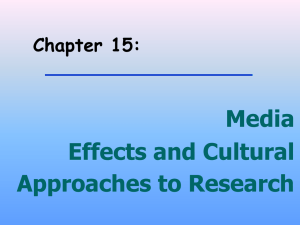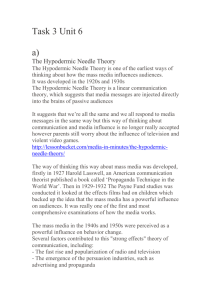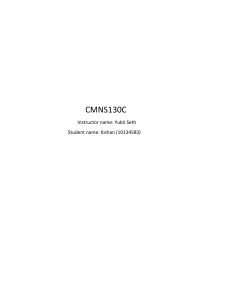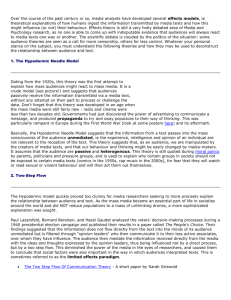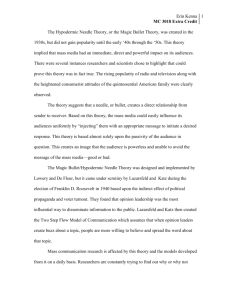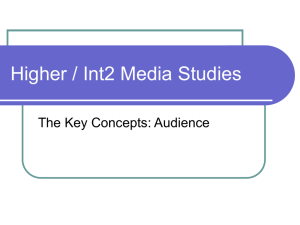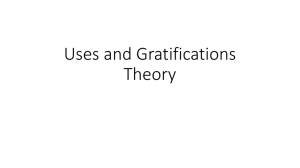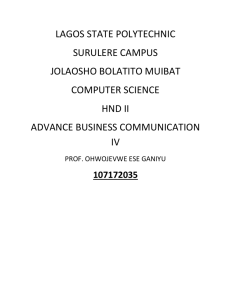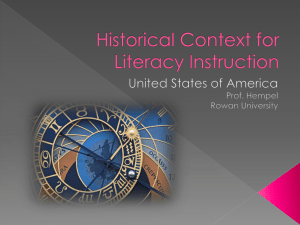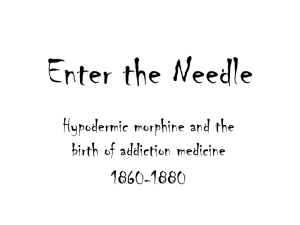2-critical_research_study
advertisement
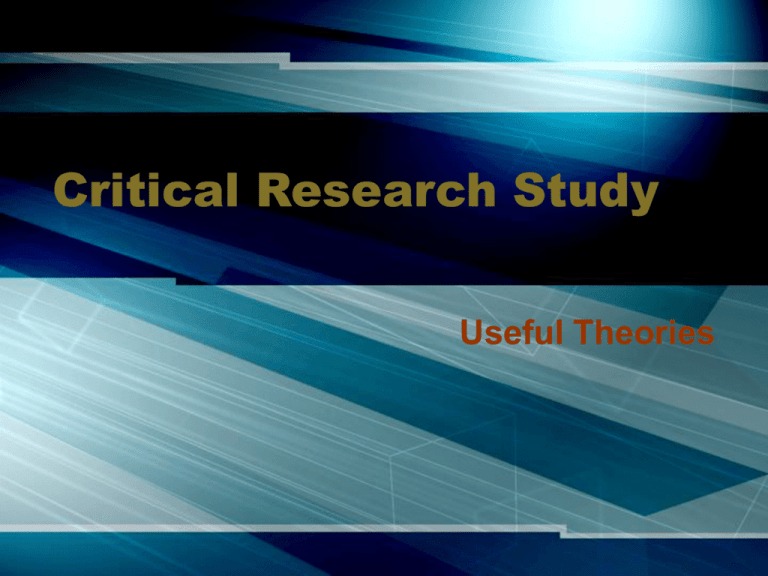
Critical Research Study Useful Theories Aims • Cover theories that you can use in your research • Help you work out how to apply them to your own study • You MUST cover at least ONE audience theory • Consider all theories that are relevant – the more you use, the more critical your study Which theories? • Audience: Hypodermic needle model, two-step flow, cultivation theory, uses and gratifications model, reception theory. • Male Gaze and voyeurism • Representation theories Audience Theory 1: Hypodermic Needle Model • Theory developed in 1920’s • First theory applied to how audiences receive the media • Principle that audience passively receives a text without processing or challenging the data • Governments cottoned on to this and used the theory to their advantage – by creating propaganda (e.g. Hitler). • Theory suggests that intelligence and opinion of audience are irrelevant. • Theory suggests we are manipulated by media texts. Audience Theory 2: Two Step Flow • Sometimes referred to as limited effects paradigm • Suggests information does not flow directly from text to mind of reader • Info flows through “opinion leaders” who add their own spin to an idea • This is then communicated to the general audience who assimilate the primary information incorporating the ideas of the opinion leaders. Audience Theory 3: Uses and Gratifications Model • During 1960’s it became apparent that audiences consumed texts for different reasons and in different ways • Diversion: escape from everyday problems • Personal Relationships: using the media for emotional and other interaction • Personal Identity: finding yourself reflected in texts, learning behaviour and vales from text. • Surveillance: Information useful for living, such as weather reports. Audience Theory 4: Reception Theory • Theory extends the concept of an active reader still further • Describes how gender, class, age, ethnicity affects our reading of texts • Meaning is encoded by the producer, then decoded by the reader • Use recognised conventions and audience expectation to position the audience • Producer and reader then have certain amount of agreement on what the text means – this is known as preferred reading. Audience Theory 5: • A direct development of the hypodermic model • Came about because it’s difficult to prove effect of media text on audience • States that one media text will not have too much effect on behaviour • However suggests that repeated viewing of violent material may decrease sensitivity to violence and violent behaviour • Some media companies use this to their advantage • No proof has been uncovered to ratify this theory, but it doesn’t mean its not a good idea Moral Panics • Directly related to the hypodermic needle theory, as it relies on audiences being passive enough that their behaviour is changed • Famous cases include Natural Born Killers producers, who were sued by the families of murder victims • Families believed producers should be held responsible for the killers actions as they were influenced by what they had seen • Process by which members of society become sensitive to challenges to their own moral values, as a result of the media construct of an attitude towards social problems. Male Gaze and Voyeurism • Developed by Laura Mulvey, prominent feminist film critic • Defines the relationship between female characters and the male audience • Describes how females are set up as sexual objects within films through soft focus camerawork and mise-en-scene Representations • Characters are constructed in a series of different ways: • Caricature – exaggerated construct of existing characteristic e.g. Little Britain • Cultural – exact reconstruction of social group e.g. Soap opera • Stereotype – generic representation of a group e.g. 24
